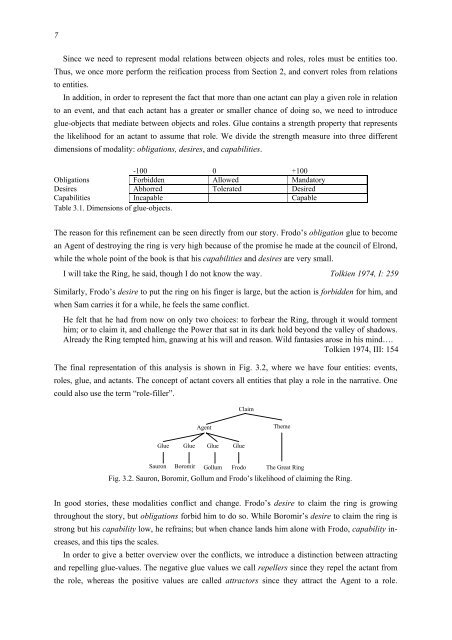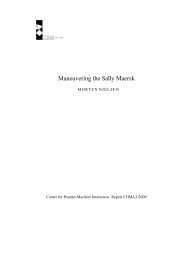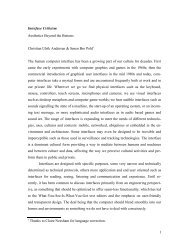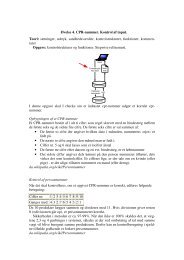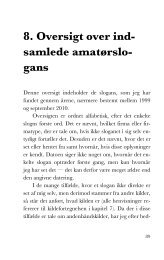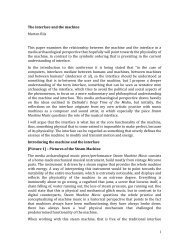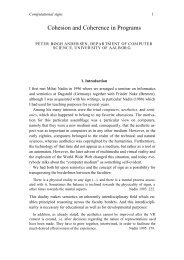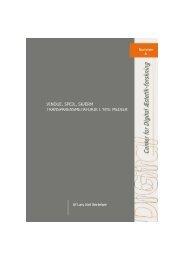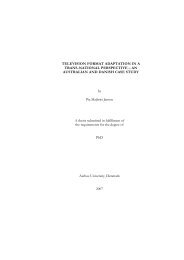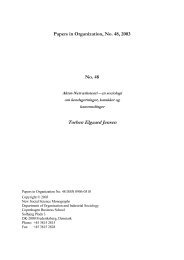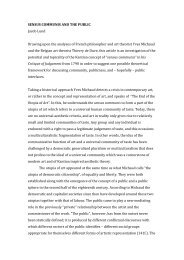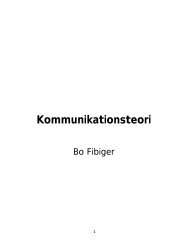Interaction and narration. Tearing Tolkien apart - CiteSeerX
Interaction and narration. Tearing Tolkien apart - CiteSeerX
Interaction and narration. Tearing Tolkien apart - CiteSeerX
Create successful ePaper yourself
Turn your PDF publications into a flip-book with our unique Google optimized e-Paper software.
7<br />
Since we need to represent modal relations between objects <strong>and</strong> roles, roles must be entities too.<br />
Thus, we once more perform the reification process from Section 2, <strong>and</strong> convert roles from relations<br />
to entities.<br />
In addition, in order to represent the fact that more than one actant can play a given role in relation<br />
to an event, <strong>and</strong> that each actant has a greater or smaller chance of doing so, we need to introduce<br />
glue-objects that mediate between objects <strong>and</strong> roles. Glue contains a strength property that represents<br />
the likelihood for an actant to assume that role. We divide the strength measure into three different<br />
dimensions of modality: obligations, desires, <strong>and</strong> capabilities.<br />
-100 0 +100<br />
Obligations Forbidden Allowed M<strong>and</strong>atory<br />
Desires Abhorred Tolerated Desired<br />
Capabilities Incapable Capable<br />
Table 3.1. Dimensions of glue-objects.<br />
The reason for this refinement can be seen directly from our story. Frodo’s obligation glue to become<br />
an Agent of destroying the ring is very high because of the promise he made at the council of Elrond,<br />
while the whole point of the book is that his capabilities <strong>and</strong> desires are very small.<br />
I will take the Ring, he said, though I do not know the way. <strong>Tolkien</strong> 1974, I: 259<br />
Similarly, Frodo’s desire to put the ring on his finger is large, but the action is forbidden for him, <strong>and</strong><br />
when Sam carries it for a while, he feels the same conflict.<br />
He felt that he had from now on only two choices: to forbear the Ring, through it would torment<br />
him; or to claim it, <strong>and</strong> challenge the Power that sat in its dark hold beyond the valley of shadows.<br />
Already the Ring tempted him, gnawing at his will <strong>and</strong> reason. Wild fantasies arose in his mind….<br />
<strong>Tolkien</strong> 1974, III: 154<br />
The final representation of this analysis is shown in Fig. 3.2, where we have four entities: events,<br />
roles, glue, <strong>and</strong> actants. The concept of actant covers all entities that play a role in the narrative. One<br />
could also use the term “role-filler”.<br />
Claim<br />
Agent<br />
Theme<br />
Glue Glue Glue Glue<br />
Sauron Boromir Gollum Frodo The Great Ring<br />
Fig. 3.2. Sauron, Boromir, Gollum <strong>and</strong> Frodo’s likelihood of claiming the Ring.<br />
In good stories, these modalities conflict <strong>and</strong> change. Frodo’s desire to claim the ring is growing<br />
throughout the story, but obligations forbid him to do so. While Boromir’s desire to claim the ring is<br />
strong but his capability low, he refrains; but when chance l<strong>and</strong>s him alone with Frodo, capability increases,<br />
<strong>and</strong> this tips the scales.<br />
In order to give a better overview over the conflicts, we introduce a distinction between attracting<br />
<strong>and</strong> repelling glue-values. The negative glue values we call repellers since they repel the actant from<br />
the role, whereas the positive values are called attractors since they attract the Agent to a role.


